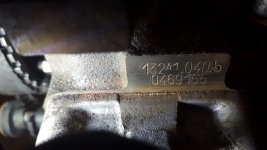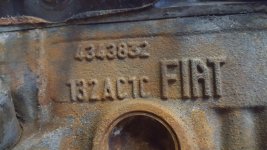If the line nuts are tapered thread then you need taper plugs.
Taper plugs are usually either BSP (British Standard Pipe Thread), BSP.Tr (British Standard Taper Pipe Thread) or NPT (American National Pipe Thread).
Given that these are on a Fiat engine, I'd reckon the taper plugs needed are probably BSP.Tr - I don't think there are any metric tapered threads - but I could be wrong... To help you determine what type of plugs you require :-
BSP threads Size 1/8 inch 28 threads per inch, has a nominial thread size of 0.383"
BSP threads Size 1/4 inch 19 threads per inch, has a nominal thread size of 0.518"
BSP threads Size 3/8 inch 19 threads per inch, has a nominal thread size of 0.656"
NPT threads Size 1/16 inch has a nominal thread size of 0.313"
" " " 1/8 inch " " " " " " 0.405"
" " " 1/4 inch " " " " " " 0.540"
" " " 3/8 inch " " " " " " 0.675"
Nominal thread size means afaik the average diameter of the thread.
Sources of tapered blanking plugs - any plumbing supplies outlet, any outlet that caters for compressed air/gases etc. Truck workshops often carry stocks of blanking plugs. Also try Auto Factors.
You could check out
www.mcmaster.com/standard-cap-plugs
also
www.mcmaster.com/tube-fittings
What the parts store guy said was probably correct and the usual way of doing things.
Another alternative would be to seal the cut off lines with solder, epoxy, JB Weld or similar, if you don't have welding facilities.
Sometimes, it's possible to cut off the lines leaving a little length of metal pipe remaining, then flatten the open pipe end and either solder it or fold it over on itself.
None of these lines are under great pressure, all you're really after is to prevent any air leaks into the induction system so even plastic blanking caps pushed over the open line ends, or indeed, into the threaded holes would likely work just fine (except in locations subject to significant heat).
AL.




